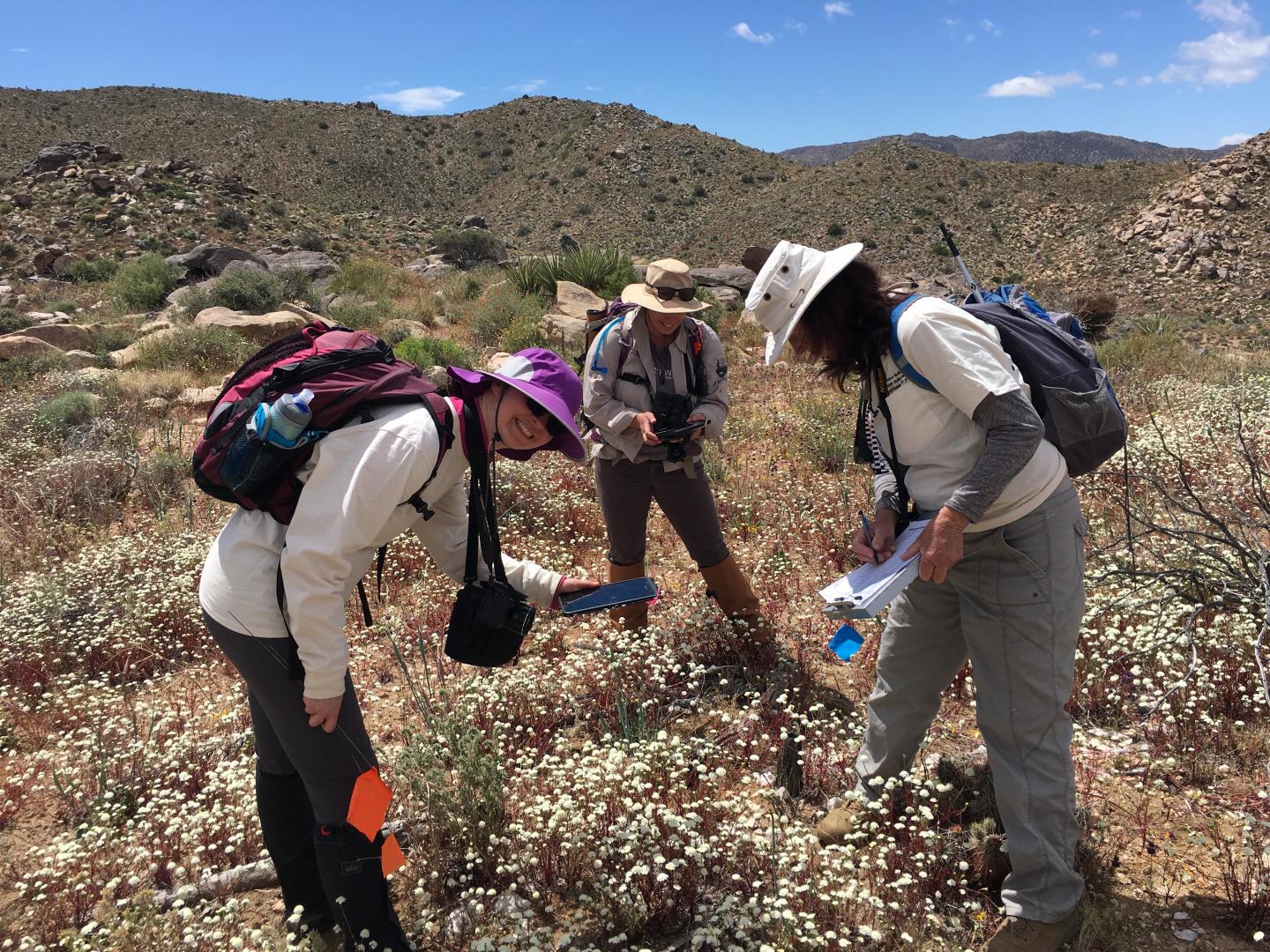
Credit: Nicholas Graver / NPS
They outlived mammoths and saber-toothed tigers. But without dramatic action to reduce climate change, new research shows Joshua trees won’t survive much past this century.
UC Riverside scientists wanted to verify earlier studies predicting global warming’s deadly effect on the namesake trees that millions flock to see every year in Joshua Tree National Park. They also wanted to learn whether the trees are already in trouble.
Using multiple methods, the study arrived at several possible outcomes. In the best-case scenario, major efforts to reduce heat-trapping gasses in the atmosphere would save 19 percent of the tree habitat after the year 2070. In the worst case, with no reduction in carbon emissions, the park would retain a mere 0.02 percent of its Joshua tree habitat.
The team’s findings were published recently in Ecosphere. Project lead Lynn Sweet, a UCR plant ecologist, said she hopes the study inspires people to take protective environmental action. “The fate of these unusual, amazing trees is in all of our hands,” she said. “Their numbers will decline, but how much depends on us.”
To answer their questions about whether climate change is already having an effect, a large group of volunteers helped the team gather data about more than 4,000 trees.
They found that Joshua trees have been migrating to higher elevation parts of the park with cooler weather and more moisture in the ground. In hotter, drier areas, the adult trees aren’t producing as many younger plants, and the ones they do produce aren’t surviving.
Joshua trees as a species have existed since the Pleistocene era, about 2.5 million years ago, and individual trees can live up to 300 years. One of the ways adult trees survive so long is by storing large reserves of water to weather droughts.
Younger trees and seedlings aren’t capable of holding reserves in this way though, and the most recent, 376-week-long drought in California left the ground in some places without enough water to support new young plants. As the climate changes, long periods of drought are likely to occur with more frequency, leading to issues with the trees like those already observed.
An additional finding of this study is that in the cooler, wetter parts of the park the biggest threat other than climate change is fire. Fewer than 10 percent of Joshua trees survive wildfires, which have been exacerbated in recent years by smog from car and industrial exhaust. The smog deposits nitrogen on the ground, which in turn feeds non-native grasses that act as kindling for wildfires.
As a partner on this project, the U.S. Park Service is using this information to mitigate fire risk by removing the invasive plants.
“Fires are just as much a threat to the trees as climate change, and removing grasses is a way park rangers are helping to protect the area today,” Sweet said. “By protecting the trees, they’re protecting a host of other native insects and animals that depend on them as well.”
UCR animal ecologist and paper co-author Cameron Barrows conducted a similar research project in 2012, which also found Joshua tree populations would decline, based on models assuming a temperature rise of three degrees. However, this newer study considered a climate change scenario using twice as many variables, including soil-water estimates, rainfall, soil types, and more. In addition, Barrows said on-the-ground observations were essential to verifying the climate models this newer team had constructed.
Quoting the statistician George Box, Barrows said, “All models are wrong, but some are useful.” Barrows went on to say, “Here, the data we collected outdoors showed us where our models gave us the most informative glimpse into the future of the park.”
For this study, the UC Riverside Center for Conservation Biology partnered with Earthwatch Institute to recruit the volunteer scientists. Barrows and Sweet both recommend joining such organizations as a way to help find solutions to the park’s problems.
“I hope members of the public read this and think, ‘Someone like me could volunteer to help scientists get the kind of data that might lend itself to concrete, protective actions,'” Barrows said.
###
Media Contact
Jules Bernstein
[email protected]
Related Journal Article
http://dx.




